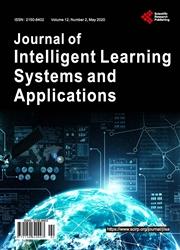Genetic Optimization of Artificial Neural Networks to Forecast Virioplankton Abundance from Cytometric Data
引用次数: 12
Abstract
Since viruses are able to influence the trophic status and community structure they should be accessed and accounted in ecosystem functioning and management models. So, this work met a set of biological, chemical and physical time series in order to explore the correlations with marine virioplankton community across different trophic gradients. The case studied is the Arraial do Cabo upwelling system, northeast of Rio de Janeiro State in Southeast coast of Brazil. The main goal is to evolve three type of artificial neural network (ANN) by genetic algorithm (GA) optimization to predict virioplankton abundance and dynamic. The input variables range from the abundance of phytoplankton, bacterioplankton and its ratios acquired by one in situ and another ex situ flow cytometers. These data were collected with weekly frequency from August 2006 to June 2007. Our results show viruses being highly correlated to their host, and that GA provided an efficient method of optimizing ANN architectures to predict the virioplankton abundance. The RBF-NN model presented the best performance to an accuracy of 97% for any period in the year. A discussion and ecological interpretations about the system behavior is also provided.利用细胞数据预测浮游生物丰度的人工神经网络遗传优化
由于病毒能够影响营养状况和群落结构,它们应该在生态系统功能和管理模型中被获取和考虑。因此,本研究通过一系列的生物、化学和物理时间序列来探索不同营养梯度与海洋浮游生物群落的相关性。研究的案例是巴西东南海岸巴西里约热内卢州东北部的Arraial do Cabo上升流系统。主要目的是通过遗传算法(GA)优化进化出三种类型的人工神经网络(ANN)来预测浮游生物的丰度和动态。输入变量的范围从浮游植物、浮游细菌的丰度及其由一个原位和另一个非原位流式细胞仪获得的比率。这些数据于2006年8月至2007年6月以每周频率收集。我们的研究结果表明,病毒与其宿主高度相关,遗传算法提供了一种有效的方法来优化人工神经网络架构,以预测浮游生物的丰度。RBF-NN模型在一年中任何时期的准确率都达到97%,表现最佳。对系统行为进行了讨论和生态解释。
本文章由计算机程序翻译,如有差异,请以英文原文为准。
求助全文
约1分钟内获得全文
求助全文

 求助内容:
求助内容: 应助结果提醒方式:
应助结果提醒方式:


